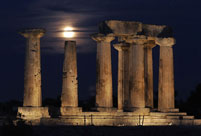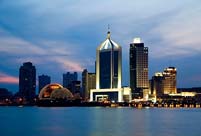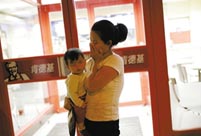 Interpreting the eight issues of the G20 summit
Interpreting the eight issues of the G20 summit
 Photo story: A rural orphan's wish
Photo story: A rural orphan's wish
 President Xi visits four central Asian nations and attend G20, SCO summits
President Xi visits four central Asian nations and attend G20, SCO summits
 Tibetan ethnic costumes presented during tourism festival in NW China
Tibetan ethnic costumes presented during tourism festival in NW China
 Update the China-ASEAN relationship
Update the China-ASEAN relationship
 Fresh students 'forced' to register in university independently
Fresh students 'forced' to register in university independently
 Vintage cars exhibited at auto cultural festival in China's Shanxi
Vintage cars exhibited at auto cultural festival in China's Shanxi
 Reading by the tongue
Reading by the tongue
 Those embarrassing copycat buildings
Those embarrassing copycat buildings
Growth
The number of chateaus in Yantai will reach 150 by 2015, according to the Yantai Vine and Wine Office.
Besides Chinese wine heavyweights like Changyu, China Great Wall Wine Co Ltd and Dynasty Fine Wines Group Ltd, alcoholic drinks maker Kweichow Moutai Co is constructing a wine chateau.
However, industry experts said building and running a chateau in China isn't easy.
"Chateau builders may face crucial challenges from domestic and foreign wine heavyweights as they don't have parallel advantages in grape growing, wine-making techniques and marketing," said Li Hua, professor at Northwest Agriculture and Forest University.
Last April, Domaines Barons de Rothschild, Chateau Lafite's parent company, teamed up with CITIC Capital Holdings Ltd, China's largest State-owned investment company, to build a chateau in Penglai, a city on the easternmost tip of Shandong, one of China's largest wine-producing areas.
The vineyard around the chateau will reach 50 ha, which can produce 20,000 bottles of wine in its first production year, set for 2016.
More than 90 percent of the wines produced here target the Chinese market.
Data from the National Bureau of Statistics show that the sales volume and net profit of domestic wine producers declined in the first half of this year.
Meanwhile, Chinese customs figures show first-half wine imports rose 20.9 percent to 140.6 million liters, and the value of imported wines rose 8.2 percent to 535.3 million euros ($713.34 million).
The declining demand for domestic wines is casting a shadow on chateau development in the nation.
For example, Beijing's Yanqing county announced in July that it had stopped work on 40 of the 44 chateaus it had planned to build for next year's 11th International Conference on Grapevine Breeding and Genetics.
Li suggested that any vineyard planning to build a chateau should construct something unique, instead of just copying overseas facilities.

 Weekly selection of world photos (Aug.19-Aug.24)
Weekly selection of world photos (Aug.19-Aug.24) Army aviation brigade in actual-troop drill
Army aviation brigade in actual-troop drill Top 10 Chinese provinces for the well-heeled
Top 10 Chinese provinces for the well-heeled  Baby born to save his sister - the story of a savior sibling
Baby born to save his sister - the story of a savior sibling Lady of mystery: Female SWAT team in prison disclosed
Lady of mystery: Female SWAT team in prison disclosed  Single mother, baby live in KFC restaurant for months
Single mother, baby live in KFC restaurant for months Fan Bingbing poses for Malaysian magazine Citta Bella
Fan Bingbing poses for Malaysian magazine Citta Bella Zhang Xinyi covers COSMOPOLITAN
Zhang Xinyi covers COSMOPOLITAN A collection of bizarre rooftop buildings around China
A collection of bizarre rooftop buildings around China 100th birthday of 'Little Mermaid'
100th birthday of 'Little Mermaid' China, U.S. conduct joint anti-piracy drill
China, U.S. conduct joint anti-piracy drill  'Abandoned' life in cement boats in Huai River
'Abandoned' life in cement boats in Huai River 2013 Taiwan Int'l Tourism Expo kicks off in Taipei
2013 Taiwan Int'l Tourism Expo kicks off in Taipei Photo story: Take a gap year
Photo story: Take a gap year Nokia's Global Headquarters: visiting a declining empire
Nokia's Global Headquarters: visiting a declining empireDay|Week|Month